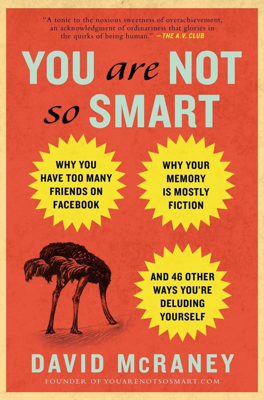Summary
Misconception vs. Truth
Misconception:
You know when you are being influenced and how it is affecting your behavior.
Truth:
You are unaware of the constant nudging you receive from ideas formed in your unconscious mind.
Highway Hypnosis
- "Highway hypnosis" describes a dissociative state during repetitive tasks where the unconscious mind takes over, allowing the conscious mind to drift.
Unconscious Influence Experiments
- Chen-Bo Zhong and Katie Liljenquist: Hand-washing reduces guilt unconsciously.
- Priming Experiments:
- Ultimatum Game: Business-related images lead to more competitive behaviors.
- Smell Priming: The smell of cleaning products influences cleanliness behaviors.
- Sports Drink Visual Priming: Seeing sports drink bottles increases physical endurance.
Decision-Making Complexity
- Decisions are influenced both by conscious (top-down) and unconscious (bottom-up) processes.
- Unconscious priming subtly guides behavior without our awareness.
Practical Implications
- Everyday objects and symbols can subtly affect decisions.
- Awareness of priming can lead to creating environments that positively influence behavior, e.g., using a grocery list.
Misconception vs. Truth
Misconception:
You know when you are lying to yourself.
Truth:
You often create fictional narratives to explain your decisions and emotions without realizing it.
Memory and Confabulation
- Memories are dramatized and filled with gaps by our brains, much like movies that take artistic license.
- Confabulation: The brain generates coherent but false stories to explain personal history and behavior.
Split-Brain Confabulation
- Split-brain surgeries show hemispheres can independently process information, often leading to fabricated explanations for actions.
Everyday Confabulation
- Conditions like Korsakoff’s Syndrome, Anosognosia, and Capgras Delusion illustrate severe memory fabrication.
- Ordinary people often engage in minor confabulations daily without realizing.
Practical Insights
- Understanding the malleability of memory can foster acceptance and awareness of one's own fallibility.
Misconception vs. Truth
Misconception:
Your opinions are the result of years of rational, objective analysis.
Truth:
Your opinions are shaped by paying attention to information that confirms pre-existing beliefs while ignoring contradictory information.
Confirmation Bias
- Confirmation bias leads to selectively seeking, interpreting, and recalling information that aligns with existing beliefs.
Media Consumption and Confirmation Bias
- People follow news and media that reinforce their beliefs, avoiding those that challenge their views.
Studies on Confirmation Bias
- Valdis Krebs (2008 Election): People buy books that reinforce political beliefs.
- Ohio State Study (2009): People spend more time on essays aligning with their opinions.
- Mark Snyder and Nancy Cantor (1979): Memory is influenced by pre-existing beliefs about a person.
Practical Suggestions
- Engage with diverse perspectives to challenge and refine beliefs.
- Apply critical thinking and skepticism to personal and widely accepted views.
Misconception vs. Truth
Misconception:
After learning something new, you remember how you were once ignorant or wrong.
Truth:
You retrospectively believe you always knew the new information.
Hindsight Bias
- Hindsight bias makes you believe you predicted or understood events before they happened.
Demonstration Studies
- Proverbs Study: Participants agreed with both opposing proverbs, showcasing contradictory 'common sense.'
- Nixon's China Visit Prediction: People's recollections became more accurate in hindsight.
Practical Implications
- Recognizing hindsight bias can encourage humility and open-mindedness.
- It helps in being skeptical of retrospective claims by oneself and others.
Misconception vs. Truth
Misconception:
You take randomness into account when determining cause and effect.
Truth:
You tend to impose meaning on random events, ignoring randomness.
Texas Sharpshooter Fallacy
- Named after drawing a bull's-eye around bullet holes to create the illusion of accuracy.
- Focusing on coincidences leads to false patterns.
Examples of Fallacy
- Lincoln and Kennedy Coincidences: Notable similarities overshadow numerous differences.
- Nostradamus Predictions: Ambiguous predictions retrofitted to events.
Neuroscience Perspective
- The brain's drive for order and pattern recognition can lead to false conclusions from randomness.
Practical Takeaways
- Assess causality critically and avoid attributing undue significance to coincidences.
- Understand randomness to make more rational decisions.
Per-chapter summary
- Priming
- Confabulation
- Confirmation Bias
- Hindsight Bias
- The Texas Sharpshooter Fallacy
- Procrastination
- Normalcy Bias
- Introspection
- The Availability Heuristic
- The Bystander Effect
- The Dunning-Kruger Effect
- Apophenia
- Brand Loyalty
- The Argument From Authority
- The Argument From Ignorance
- The Straw Man Fallacy
- The Ad Hominem Fallacy
- The Just-World Fallacy
- The Public Goods Game
- The Ultimatum Game
- Subjective Validation
- Cult Indoctrination
- Groupthink
- Supernormal Releasers
- The Affect Heuristic
- Dunbar’s Number
- Selling Out
- Self-Serving Bias
- The Spotlight Effect
- The Third Person Effect
- Catharsis
- The Misinformation Effect
- Conformity
- Extinction Burst
- Social Loafing
- The Illusion of Transparency
- Learned Helplessness
- Embodied Cognition
- The Anchoring Effect
- Attention
- Self-Handicapping
- Self-Fulfilling Prophecies
- The Moment
- Consistency Bias
- The Representativeness Heuristic
- Expectation
- The Illusion of Control
- The Fundamental Attribution Error
